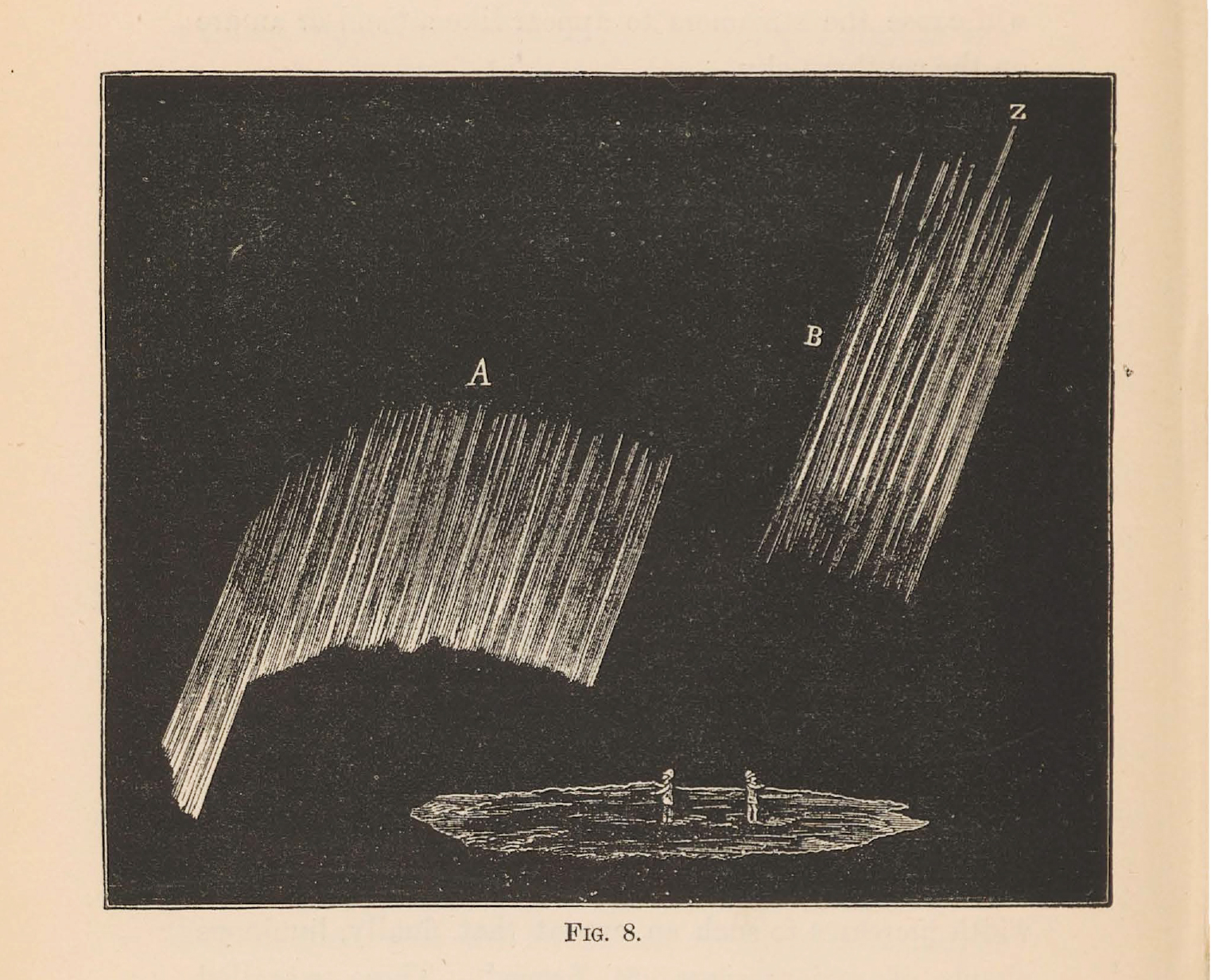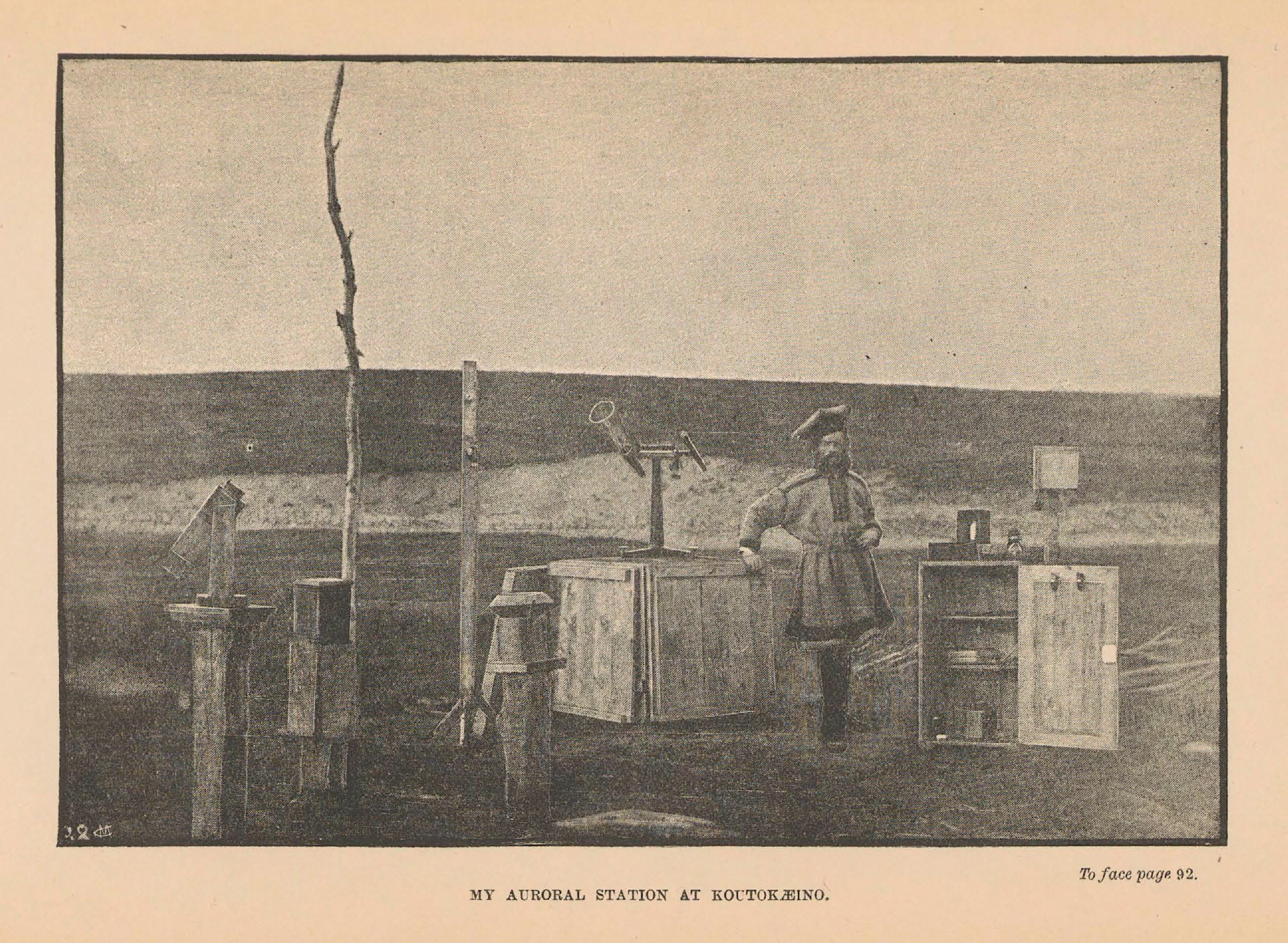Observers

In Under the Rays of the Aurora Borealis from 1885, Danish teacher and self taught auroral researcher Sophus Tromholt proposes an illustration demonstrating how two observers looking at the same aurora from distinct positions see the phenomenon in strikingly different ways. Observed from different perspectives the aurora takes on varying shapes and, at times, even contrasting colours. While the image focuses on geographical positions and perspectives, observation points have always been more diversified. There have been many observers of auroral phenomena, both known (see Hi(s)story) and unknown (see Naming), who
—
depending on their own positions, and contingent on their cultural, historical and sociopolitical context
—
have contributed to a multiplicity of diverse perspectives and conceptualisations of auroras as variably magical, biblical, scientific, economic, political and aesthetic phenomena.
Tromholt’s observers seem to gaze towards the aurora directly — their view is unobstructed by instruments or technical devices. The author however tediously lists the many tasks and the regularity of the scientist on duty, including the handling of many instruments (anemometer, barometer, telescopes, thermometer, auroral theodolite, spectroscopes, astronomical charts, photographic apparatus, lighted disk for writing) with hands benumbed with cold. Since the 19th century, much of what we know about the transient and constantly changing aurora has been observed and sensed through imaging technologies and instruments such as these, considerably affecting and altering understandings and knowledge of the phenomena. While auroras occur in specific regions, it is not the position alone that matters, but also the tools of the observer that render specific appearances of the aurora possible. Today multiple instruments in the air, on satellites and on the ground, including radars, cameras, rockets, navigation satellite receivers, and other complementing radio instruments, observe and measure auroral and related near-space processes producing large data sets that need to be analysed computationally. In the process, observation becomes a Big data thing in which the observer is not necessarily a human figure (see Posthuman perspective).
Tromholt’s observers seem to gaze towards the aurora directly — their view is unobstructed by instruments or technical devices. The author however tediously lists the many tasks and the regularity of the scientist on duty, including the handling of many instruments (anemometer, barometer, telescopes, thermometer, auroral theodolite, spectroscopes, astronomical charts, photographic apparatus, lighted disk for writing) with hands benumbed with cold. Since the 19th century, much of what we know about the transient and constantly changing aurora has been observed and sensed through imaging technologies and instruments such as these, considerably affecting and altering understandings and knowledge of the phenomena. While auroras occur in specific regions, it is not the position alone that matters, but also the tools of the observer that render specific appearances of the aurora possible. Today multiple instruments in the air, on satellites and on the ground, including radars, cameras, rockets, navigation satellite receivers, and other complementing radio instruments, observe and measure auroral and related near-space processes producing large data sets that need to be analysed computationally. In the process, observation becomes a Big data thing in which the observer is not necessarily a human figure (see Posthuman perspective).

Under the Rays of the Aurora Borealis is situated in Sápmi, a north european region inhabited by Sámi people. While the principal cause of Tromholt’s journey was to study auroral phenomena and to take measurements that would allow him to determine their height, the author maintains it is neither a scientific treatise, nor a novel, but rather a travelling account of his year long sojourn “in the land of the Lapps and Kvaens”. The life, people and nature of arctic Fennoscandia are portrayed together with Tromholt’s auroral research. Yet, while auroral observations are consistently part of the everyday lives of the local inhabitants, and while stating that “In truth, we, who claim to know so much about the properties of light and the elements, have as much reason to watch this beautiful process in wonder as the simple Lapps; we understand it almost as imperfectly as they”, the book does not reveal any observations or perspectives of Sámi people on the phenomena.